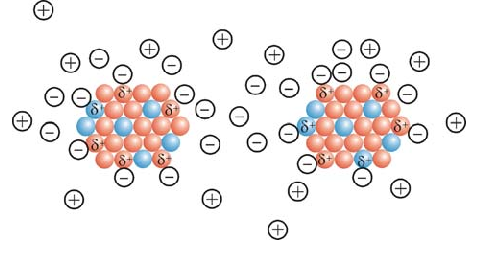Nuclear power
Nuclear electricity - if the reaction is carried out on one kilo of uranium 235U , the electrical energy (electricity) obtained is equal to 106 x 20 kwH (kilowatts per hour).
Researcher and author: Dr. ( Afshin Rashid)
Note: In a nuclear or fusion power plant, in practice, the nucleus of a heavy element, for example uranium 235U, is bombarded by accelerated neutrons, in this case, one Mev of binding energy is released for each uranium nucleon. Now, if this reaction is carried out on one kilo of 235U, the energy obtained will be equivalent to 106 x 20 kwH. If we want to obtain this amount of energy from fossil fuels, the amount of 1.7 million liters with 2.5 million kilos of coal is needed. we have.
In the enrichment section, uranium is enriched to about 4-5%. Because this percentage will be enough to produce energy. (peaceful energy) because the chemical properties of uranium 238 and 235 are the same, so we cannot separate them through chemical processes. But because uranium 238 is heavier than uranium 235. We use this property to separate these two types of uranium. Uranium 235 is fissile and 238 is not. Uranium 235 decays by itself, but it has a long life (one million years). If the percentage of uranium 235 exceeds a certain limit, there is a possibility of a chain reaction. One out of every three released neutrons is consumed, and the other two neutrons are released, which are used for subsequent reactions. Again, six neutrons are produced, two neutrons are used and the other four neutrons are used for other reactions and so on.
In nuclear fission reactions, large amounts of energy are released (around 200 Mev), but the more important issue is that the result of breaking the uranium-235 nucleus is the release of two neutrons, which can break two other nuclei and create four neutrons. These four neutrons also break four uranium-235 nuclei. Four broken nuclei produce eight neutrons, which are able to break the same number of uranium nuclei, then the nuclear break and the release of neutrons in a chain-like manner rapidly multiply and develop.
"Separative work unit" or "separative work unit" is the amount of separation in an enrichment process that is a function of the concentration of unenriched, enriched and slag material and with units proportional to the total input (energy/machine operation time) and mass It is expressed. Separation work is not the same as energy; And for the same amount of work unit, it requires different energy depending on the efficiency of the separation method. The cylinder's fast rotating centrifuge produces a very strong centrifugal force, during which the heavier molecules (those containing the uranium 238 isotope) move away from the center of the rotation axis, and on the contrary, the lighter molecules (containing the isotope (uranium 235) more) They are placed around the axis of the centrifuge.
Conclusion:
In the nuclear power plant or fusion, in practice, the nucleus of a heavy element, for example uranium 235U, is bombarded by accelerated neutrons, in this case, one Mev of binding energy is released for each uranium nucleon. Now, if this reaction is carried out on one kilo of 235U, the energy obtained will be equivalent to 106 x 20 kwH. If we want to obtain this amount of energy from fossil fuels, the amount of 1.7 million liters with 2.5 million kilos of coal is needed. we have.
Researcher and author: Dr. ( Afshin Rashid)
Specialized doctorate in nano-microelectronics






